
高絕緣電阻測量儀-表面電阻率測試儀 高絕緣電阻測量儀用于測量絕緣材料、電工產(chǎn)品、各種元器件的絕緣電阻;與恒溫水浴配套后,還能測量不同溫度下的塑料電線電纜(無屏蔽層)的絕緣電阻,該儀器具有測量精度高、性能穩(wěn)定、操作簡單、輸入端高壓短路等優(yōu)點,儀器的高量程1018Ω電阻值(測試電壓為1000V)
高絕緣電阻測量儀-表面電阻率測試儀 技術(shù)指標
1. 電阻測量范圍:1?104Ω~1?1018Ω,分為十個量程。
2. 電流測量范圍為2?10-4A~1?10-16A
3. 全數(shù)字液晶屏顯示。
4. 準確度:準確度優(yōu)于下表
量程有效顯示范圍20~30℃ RH<80%
104 0.01~19.99 5%
105 0.01~19.99 5%
106 0.01~19.99 5%
107 0.01~19.99 5%
108 0.01~19.99 5%
109 0.01~19.99 5%
1010 0.01~19.99 5% 2字
1011 0.01~19.99 5% 2字
1012 0.01~19.99 5% 5字
1013 0.01~19.99 10% 5字
1014 0.01~19.99 10% 5字
1014以上0.01~19.99 10-15% 5字
超出有效顯示范圍時誤差有可能增加,測試電流準確度與電阻相同,測試電壓準確度為10%
5.使用環(huán)境:溫度-10℃~50℃相對濕度<90%。
6.測試電壓: DC10V、50V、100V、250V、500V、1000V。?10%
7.供電形式: AC 220V,50HZ,功耗約10W。
8.儀器尺寸: 300mm? 280mm? 150 mm。
9.質(zhì)量:約3.0KG。
說明
1.電阻率ρ不僅和導體的材料有關(guān),還和導體的溫度有關(guān)。在溫度變化不大的范圍內(nèi):幾乎所有金屬的電阻率隨溫度作線性變化,即ρ=ρo(1 at)。式中t是攝氏溫度,ρo是O℃時的電阻率,a是電阻率溫度系數(shù)。
2.由于電阻率隨溫度改變而改變,所以對于某些電器的電阻,必須說明它們所處的物理狀態(tài)。如一個220 V -100 W電燈燈絲的電阻,通電時是484歐姆,未通電時只有40歐姆左右。
3.電阻率和電阻是兩個不同的概念。電阻率是反映物質(zhì)對電流阻礙作用的屬性,電阻是反映物體對電流阻礙作用的能力大小。
4.超導體的直流電阻率在一定的低溫下突然消失,被稱作零電阻效應。導體沒有了電阻。
電阻的作用:
電阻在電路中的作用:利用著名的歐姆定律可以利用電阻控制電路中的電壓、電流。
電阻的主要物理特征就是可以變電能為熱能,因此熱水器中的發(fā)熱元件、電燈泡、電燙斗就是利用了電阻的作用制成的。另外電阻有怕熱的特性,當導體材料溫度升高時材料的電阻率會增大(有些材料則表現(xiàn)為減小),因此利用電阻的這種特性可以制作溫度測量計(不知道你看見過沒,插一根“鐵絲”就能測量溫度的方法就是利用了這種電阻材料作用的)。
另外一些材料的電阻還會受到光線照射的印象,而利用這樣的材料可以制成光敏電阻,利用這點作用可以方便的設計光控電路以及光的測量和光電轉(zhuǎn)換等領(lǐng)域。
報告
報告應至少包括下述情況:
a)電阻率測試儀(電阻率測定儀)關(guān)于材料的說明和標志(名稱、等級、顏色、制造商等);
b)電阻率測試儀(電阻率測定儀)試樣的形狀和尺寸;
c)電阻率測試儀(電阻率測定儀)電極和保護裝置的形式、材料和尺寸;
d)電阻率測試儀(電阻率測定儀)試樣的處理(清潔、預干燥、處理時間、濕度和溫度)等;
e)電阻率測試儀(電阻率測定儀)試驗條件(試樣溫度、相對由度);
f)電阻率測試儀(電阻率測定儀)測量方法;
g)電阻率測試儀(電阻率測定儀)施加電壓;
h)電阻率測試儀(電阻率測定儀)體和、電阻率(需要時);
注1:當規(guī)定了一個固定的電化時間時,注明此時間,給出個別值,并報告中值作為體積電阻率。
注2: 當在不同的電化時間后測試時,應按如下要求報告:
當在相同的電化時間里試樣達到一個穩(wěn)定狀態(tài)肘,給出個別值,并報告中值作為體積電阻率。在這個電化時間里有某些試樣不能達到穩(wěn)定狀態(tài),則報告不能達到穩(wěn)定狀態(tài)的試樣數(shù),并分別地給出它們的結(jié)果。當測試結(jié)果取決于電化時間時,則報告它們之間的關(guān)系,例如.以圖的形式或給出在電化Imin、10min和100min后的體積電阻率的中值。
i)表面電阻率(需要時):
給出電化時間為1 min的個別值,并報告其中值作為表面電阻率。
方法
測量高電阻常用的方法是直接法或比較法。
直接法是測量加在試樣上的直流電壓和流過它的電流(伏安法)而求得未知電阻。
比較法是確定電橋線路中試樣未知電阻與電阻器已知電阻之間的比值,或是在固定電壓下比較通過這兩種電阻的電流。
附錄A給出了描述這些原理的例子。
伏安法需要一適當精度的伏特表,但該方法的靈敏度和度主要取決于電流測量裝置的性能,該裝置可以是一個檢流計或電子放大器或靜電計。
電橋法只需要一靈敏的電流檢測器作為零點指示器,測量度主要取決于已知的橋臂電阻器,這些橋臂電阻應在寬的電阻值范圍內(nèi)具有高的精密度和穩(wěn)定性。
電流比較法的度取決于已知電阻器的度和電流測量裝置,包括與它相連的測量電阻器的穩(wěn)定度和線性度。只要電壓是恒定的,電流的確切數(shù)值并不重要。
對于不大于1011Ω的電阻,可以按照11.1用檢流計采用伏特計一安培計法來測定其體積電阻率。 對于較高的電阻,則推薦使用直流放大器或靜電計。
在電橋法中,不可能直接測量短路試樣中的電流(見11.1)。
利用電流測量裝置的方法可以自動記錄電流,以簡化穩(wěn)態(tài)測試過程(見11.1)。
現(xiàn)己有測量高電阻的一些專門的線路和儀器。只要它們有足夠的度和穩(wěn)定度,且在需要時能使試樣短路并在電化前測量電流者,均可使用。
典型應用
1測量防靜電鞋、導電鞋的電阻值
按照國家標準GB4386-84《防靜電膠底鞋(靴)、導電膠底鞋(靴)電阻值測量方法》防靜電鞋的電阻值必須為0.5.?105Ω1.0?108Ω范圍內(nèi),導電鞋的電阻值必須不大于1.5X105歐姆.不僅制造廠在出廠時必須按這一標準檢驗,合格后才能出廠,在工廠使用過程中也必須按這一標準進行定期檢驗,合格后才能穿用。
制造廠測量新鞋的電阻值時,應將硫化后有新鞋放置24小時以上,然后在測量所要求的溫度、濕度環(huán)境中放置2小時以后才能進行測量。使用單位在定期檢測時應將鞋洗干凈,其溫濕度的要求及放置時間同上。測量環(huán)境要求為:溫度:10℃~40℃相對濕度為40%~70%。 由于HEST121型數(shù)字表面、體積電阻率測定儀是內(nèi)部同時測量電壓和電流,且直接顯示出電阻值,所以不必另外使用電壓表和電流表以及計算電阻值。
通常測試防靜電鞋只用106、107、108Ω檔,測試完畢將開關(guān)撥回104檔。
根據(jù)上述測試的結(jié)果,根據(jù)標準來確定被測鞋是否合格或能否穿用。
2.測量防靜電材料的電阻及電阻率
一般防靜電材料的電阻值在105 Ω~1010 Ω左右的范圍內(nèi),其測量電極可采用三電極或二電極,其具體測量方法可參照有關(guān)的標準或有關(guān)資料。
3.測量計算機房用活動地板的系統(tǒng)電阻值
按照國家標準GB6650-86《計算機房用活動地板技術(shù)條件》。采用該標準的電極(也可用三電極中的主電極)測量。
4.測量絕緣材料電阻(率)
絕緣材料如塑料(聚乙稀,聚氯乙稀,尼龍等)橡膠等的電阻率很高,測量時應采取屏蔽措施,以免讀數(shù)不穩(wěn)甚至無法測量。測量時可采用三電極。具體方法可參照國家標準GB1410。
5.測量電流及1014Ω以上超高電阻的測量
當測量超過1014Ω以上的超高電阻時,可以通過測量電流的方法,然后用歐姆
定律求出超高電阻值。測量電流與測量電阻的方法基本相同,
例如:電流表頭顯示讀數(shù)為1.234,量程位置處在10-8,則電流為I=1.234?10-8 A
利用歐姆定律
V
R= ---
I
可以計算出電阻值。利用測量電流的方法可測量超過1014Ω以上的超高電阻1015~1018Ω。
describe
The resistivity ρ is not only related to the material of the conductor, but also to the temperature of the conductor. In the range where temperature changes little: the resistivity of almost all metals varies linearly with temperature, that is, ρ=ρ o (1 at). In the formula, t is the temperature in Celsius, ρ o is the resistivity at O ℃, and a is the temperature coefficient of resistivity.
2. As the resistivity changes with temperature, it is necessary to explain the physical state of the resistance of certain electrical appliances. The resistance of a 220 V -100 W electric lamp filament is 484 ohms when powered and only about 40 ohms when not powered.
3. Electrical resistivity and resistance are two different concepts. Electrical resistivity is a property that reflects the obstruction of current by a substance, and resistance is the ability of an object to obstruct current.
The sudden disappearance of the DC resistivity of superconductors at a certain low temperature is called the zero resistance effect. The conductor has lost its resistance.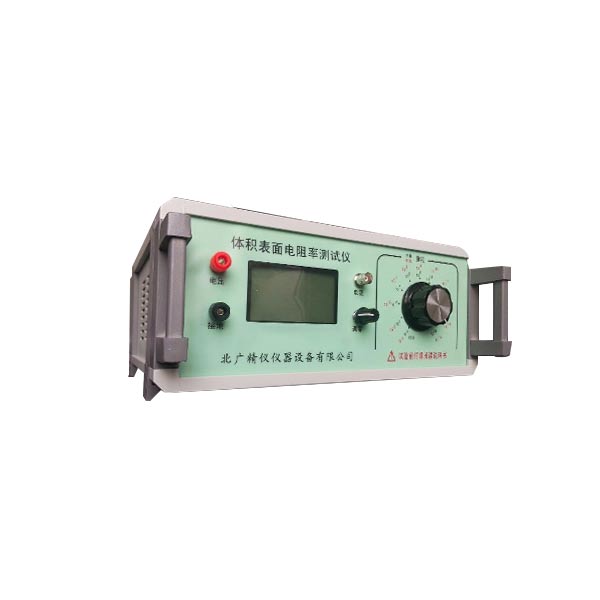
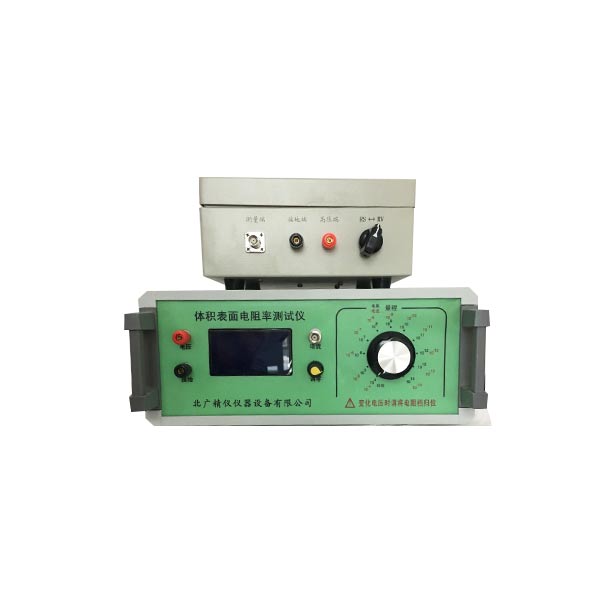
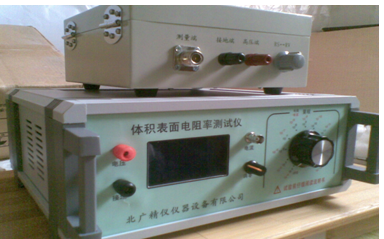
The function of resistance:
The role of resistance in circuits: Using the famous Ohm's law, resistance can be used to control the voltage and current in a circuit.
The main physical characteristic of resistance is that it can convert electrical energy into thermal energy, so the heating elements, light bulbs, and electric irons in water heaters are made using the effect of resistance. In addition, resistors have the characteristic of being sensitive to heat. When the temperature of the conductor material increases, the resistivity of the material will increase (some materials show a decrease). Therefore, using this characteristic of resistors can be used to make temperature measuring instruments (I don't know if you have seen it, the method of measuring temperature by inserting a "wire" is based on the effect of this resistor material).
In addition, the resistance of some materials can also be affected by light exposure, and using such materials can make photoresistors. This can facilitate the design of light control circuits, as well as the measurement and photoelectric conversion of light.
report
The report should include at least the following information:
a) Description and marking of materials (name, grade, color, manufacturer, etc.) for resistivity tester (resistivity tester);
b) The shape and size of the sample of the resistivity tester (resistivity tester);
c) The form, material, and size of electrodes and protective devices for resistivity testers (resistivity meters);
d) Processing of resistivity tester (resistivity tester) samples (cleaning, pre drying, processing time, humidity, and temperature), etc;
e) Test conditions for resistivity tester (resistivity tester) (sample temperature, relative humidity);
f) Measurement method of resistivity tester (resistivity measuring instrument);
g) Apply voltage to the resistivity tester;
h) Electrical resistivity tester (resistivity tester) body and resistivity (when needed);
Note 1: When a fixed electrification time is specified, indicate this time, provide individual values, and report the median as the volume resistivity.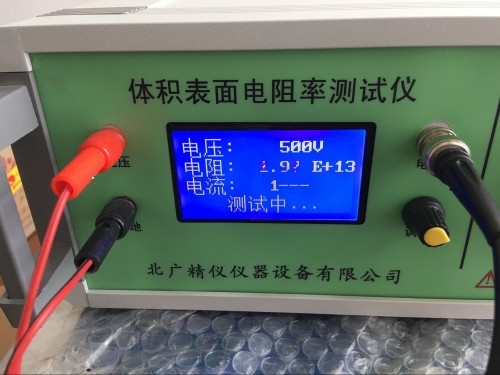
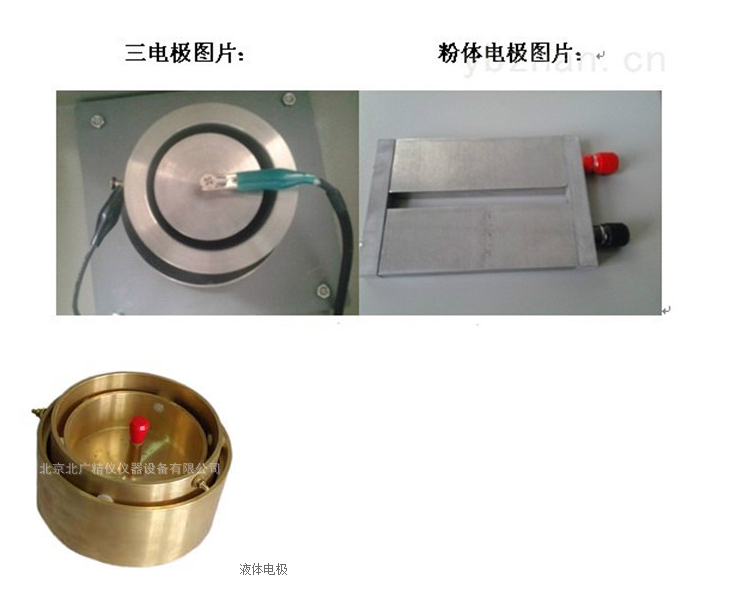
Note 2: When testing after different electrification times, the following requirements should be reported:
When the sample reaches a stable state elbow within the same electrochemical time, provide individual values and report the median as the volume resistivity. If some samples cannot reach a stable state during this electrification time, report the number of samples that cannot reach a stable state and provide their results separately. When the test results depend on the electrification time, report the relationship between them, for example, in the form of a graph or provide the median volume resistivity after electrification for Imin, 10min, and 100min.
i) Surface resistivity (when needed):
Provide individual values with an electrochemical time of 1 minute and report the value as the surface resistivity.
method
The commonly used methods for measuring high resistance are direct method or comparative method.
The direct method is to measure the DC voltage applied to the sample and the current flowing through it (volt ampere method) to obtain the unknown resistance.
The comparative method is to determine the ratio between the unknown resistance of the sample in the bridge circuit and the known resistance of the resistor, or to compare the current passing through these two resistors at a fixed voltage.
Appendix A provides examples to describe these principles.
The volt ampere method requires a voltmeter of appropriate accuracy, but the sensitivity and accuracy of this method mainly depend on the performance of the current measuring device, which can be a galvanometer, electronic amplifier, or electrostatic meter.
The bridge method only requires a sensitive current detector as a zero point indicator, and the measurement accuracy mainly depends on the known bridge arm resistors, which should have high precision and stability over a wide range of resistance values.
The degree of current comparison method depends on the known degree of the resistor and the current measuring device, including the stability and linearity of the measuring resistor connected to it. As long as the voltage is constant, the exact value of the current is not important.
For resistors not exceeding 1011 Ω, the volume resistivity can be measured using a voltmeter ammeter method according to 11.1. For higher resistance, it is recommended to use a DC amplifier or an electrostatic meter.
In the bridge method, it is not possible to directly measure the current in the short-circuit specimen (see 11.1).
The method of using a current measuring device can automatically record the current to simplify the steady-state testing process (see 11.1).
There are now some specialized circuits and instruments for measuring high resistance. As long as they have sufficient degree and stability, and can short-circuit the sample and measure the current before electrification when needed, they can be used.
體積電阻率與表面電阻的區(qū)別
體積電阻率和表面電阻是材料電學性能的兩個重要參數(shù),但兩者針對的測試對象和應用場景不同。以下是兩者的主要區(qū)別:
1. 定義與物理意義
體積電阻率(Volume Resistivity)
體積電阻率是衡量材料內(nèi)部導電性能的參數(shù),表示單位體積材料對電流的阻礙能力。
體積電阻率反映材料本身的絕緣或?qū)щ娞匦裕c材料的成分、結(jié)構(gòu)及溫度密切相關(guān)。例如,絕緣塑料的 可達12次方-16次方,而金屬的 僅為 10的-6}- 10^-4次方 。
表面電阻(Surface Resistance)
表面電阻是衡量材料表面導電性能的參數(shù),表示電流沿材料表面流動時的阻礙能力。
表面電阻受材料表面狀態(tài)(如污染、濕度、氧化層)影響顯著,常用于評估材料的防靜電性能或漏電風險。
2. 測量方法與電極配置
-體積電阻率測量
- 電極設計:使用三電極系統(tǒng)(如保護環(huán)電極),確保電流僅通過材料內(nèi)部,避免表面電流干擾。
- 測試標準:如 ASTM D257、IEC 60093。
- 適用場景:塊狀固體材料(如塑料、陶瓷、橡膠)的絕緣性能評估。
- 表面電阻測量
-電極設計:采用平行電極或同心環(huán)電極,使電流沿材料表面流動。
-測試標準:如 ASTM D4496、IEC 61340。
-適用場景:薄膜、涂層、紡織品等表面導電性能測試,或防靜電材料的篩選。
3. 應用領(lǐng)域差異
參數(shù)
體積電阻率:
核心用途評估材料內(nèi)部絕緣
典型應用電線絕緣層、電子封裝材料、高壓設備
關(guān)鍵影響因素材料成分、溫度、雜質(zhì)濃度
表面電阻:評估材料表面導電/防靜電性能 導電性
影響因素表面清潔度、濕度、污染、氧化層
4. 實例對比
絕緣塑料板:
體積電阻率高于15次方,說明內(nèi)部絕緣性能優(yōu)異;
- 表面電阻可能因吸附水分而降低于12次方,表明表面存在微弱導電性。
5. 總結(jié)
體積電阻率:表征材料整體的絕緣或?qū)щ娔芰Γ遣牧媳菊鲗傩缘捏w現(xiàn)。
表面電阻:反映材料表面的導電特性,易受環(huán)境因素和表面狀態(tài)影響。
兩者在科研、工業(yè)質(zhì)檢中常需同時測試,以全面評估材料的電學性能(如高壓絕緣材料需高體積電阻率 高表面電阻,而防靜電材料需中等體積電阻率 低表面電阻)。
業(yè)務咨詢:932174181 媒體合作:2279387437 24小時服務熱線:15136468001 盤古機械網(wǎng) - 全面、科學的機械行業(yè)免費發(fā)布信息網(wǎng)站 Copyright 2017 PGJXO.COM 豫ICP備12019803號